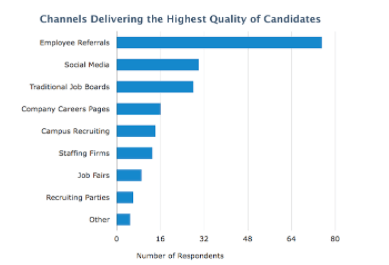Pulse Surveys can be called many different name, employee satisfaction surveys, employee engagement surveys, employee experience surveys, etc. One of the reasons I like PULSE, is because they are truly designed to measure the pulse of the employees and of the organization, as a whole, at a given point in time. Not all employees who take them are satisfied or necessarily dissatisfied, nor are they engaged or disengaged. However, all employees have an opinion, and when give a chance to air it, usually do not disappoint.
Pulse surveys take on three primary forms- Annual Surveys, which may measure a broad level of employee satisfaction, Weekly check ins that might tackle a topic or two and Reaction Surveys, which measure the employees reactions to a certain initiative.
Annual Employee Surveys
Annual Employee Surveys are common amongst employers pursuing an Employer of Choice philosophy. They provide management with the knowledge and tools to build positive employee relations and a corresponding positive work environment. Employee attitudes, burnout tendencies, engagement, loyalty and workplace environment are key indicators for employee retention, satisfaction, and productivity.
Effective businesses focus on creating and reinforcing employee satisfaction to get the most out of their human capital. Properly constructed employee satisfaction surveys provide the insights that are foundational to creating and reinforcing productive work environments. These surveys can address topics such as compensation, workload, perceptions of management, flexibility of schedules, teamwork, appropriate resources, etc.
Weekly Check-ins
Weekly Check-ins provide management insight into a particular topic or issue that is important in the near term. Frequently organization will adopt Guiding Principles or Corporate Values and choose to focus their efforts around one of these initiatives per quarter. Guiding Principles are principles that guide an organization throughout its life in all circumstances, irrespective of changes in its goals, strategies, type of work, or the top management. These can be quick questions, maybe just one or two, that give an organization directional guidance on that particular topic. These can also be useful for a department when you don’t necessarily want to check in with the organization in its entirety.
Reaction Surveys
Reactions surveys are just that. They test the reaction of employees to a specific initiative. You may have rolled out copious communications on a a particular initiative and yes, when it goes live, you hear a rumbling through the grape vine that not everyone is happy, there are misunderstandings. Reaction surveys give everyone an anonymous voice. Both Survey Monkey and CustomInsight offer employers a free vehicle to use to create these surveys and analyze the data collected.
In all cases, once you have collected and analyzed the data, give the feedback and have a plan of action to present an implement. Collecting data and not acting on it is worse than not collecting the data in the first place. Use this as an opportunity to show your employees that you really do care and you will be rewarded with their honest thoughts and opinions going forward, helping you, as an employer, to create a truly great place to work.







